► Audi has finally replaced the Q5
► All-new model gets fresh underpinnings
► And some new petrol and diesel engines
The Q5 has been a real success story for Audi. Not only is it one of the company’s biggest money spinners, the brand tells us it’s also been one of the most popular mid-size SUVs in Europe since the first-generation model was launched 15 years ago. So, this all-new, third-generation Audi Q5 has quite a lot riding on its shoulders.
But Audi is confident the new Q5 can fill the old one’s boots, not least because of how much money it’s thrown at its development. The SUV is built on the company’s brand-spanking new Premium Platform Combustion (PPC) architecture, plus it’s fitted with an all-new infotainment suite and powered by a fresh range of petrol and diesel engines.
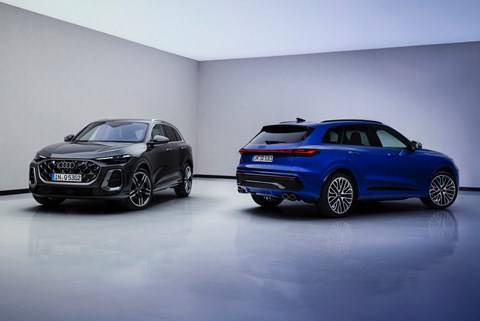
That latter decision seems rather bold when you consider how large the 2035 EU ban on combustion-powered vehicles is looming. But Audi has looked at the dwindling demand for electric cars and realigned it product plan. Now, it’s hedging its bets that petrol and diesel engines will still be relevant well into the 2030s – and it’s hoping this new Q5 will be the car to satisfy the demand.
What’s powering the new Audi Q5?
Like the Audi A5, the new Q5 features Audi’s clever 48-volt MHEV Plus technology. I’ve covered how the system works in exacting detail in this dedicated explainer page – but I’ll give you a brief overview here.
The combustion engines are supported by a 1.76kWh battery pack (which is about twice the size of a normal mild hybrid car’s) and two electric motors. There’s one mounted to the engine amongst the ancillaries and one lashed to the rear of the gearbox.
The second motor is beefy enough to power the car on its own at speeds of up to 18mph – and it can also keep the car ticking along once it’s reached motorway speeds. The upshot of the tech is that Audi’s new combustion cars use less fuel and produce fewer CO2 emissions than their predecessors without paying a packaging penalty.
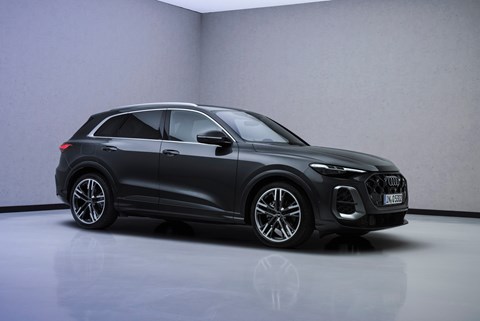
The Q5’s new petrol engines are interesting, too. There are three options to choose from – two petrols and one diesel. The cheapest petrol is a rather humdrum 2.0-litre four-cylinder unit with 201bhp and 251lb ft of torque. It sends drive to the front wheel as standard, although buyers can option Audi’s quattro all-wheel drive system.
The engine above it is more exciting. It’s a 3.0-litre V6 with 362bhp and 406lb ft of torque – and the upsizing goes to show just how efficient Audi’s new MHEV Plus system is. It’ll be fitted exclusively to the sporty SQ5 model which, naturally, will also come with extras such as quattro all-wheel drive and adaptive air suspension.
But it’s the diesel that’s perhaps the most surprising engine of the lot. Most car makers have ditched diesel power in favour of heavily electrified petrol engines – but Audi recognises there as still plenty of long-distance drivers who need the sort of fuel economy that only a diesel can deliver.
The engine it chose is an improved version of the Volkswagen Group’s familiar EA288 unit, which is fitted to everything from the Volkswagen Golf to the Skoda Superb. It has 201bhp and 295 lb ft of torque and, in the Q5, it’s only available with all-wheel drive.
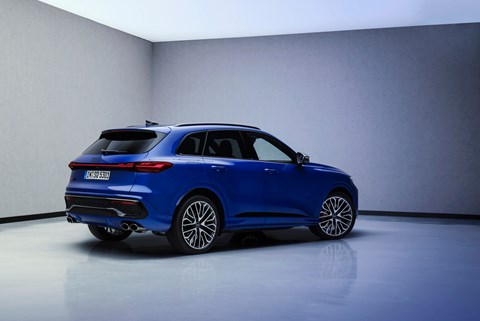
In 2025, Audi will also launch two plug-in hybrid versions of the Q5. They’ll use the same 2.0-litre four-cylinder petrol engine as the base model as their starting point, onto which they’ll add a larger 20kWh+ battery pack and more powerful electric motors.
There’ll be two outputs available – 295bhp or 335bhp – and both will be able to cover more than 62 miles on electric power alone. Plus, because the battery is packaged into a cavity under the boot floor, buyers won’t pay a huge penalty in storage space by opting for the PHEV.
What’s the new Audi Q5’s interior like?
Unlike any Audi other we’ve yet seen. The infotainment system is the most obvious change. There’s an 11.9-inch digital gauge cluster ahead of the driver and a 14.5-inch infotainment screen in the centre of the dash, both mounted under one huge slab of curved glass.
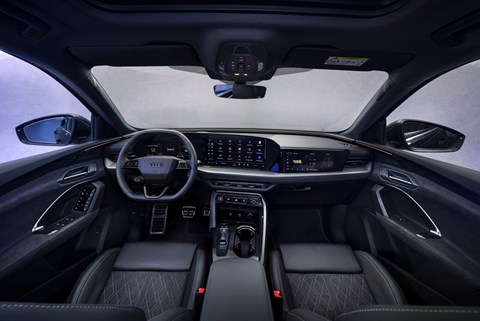
I’ve used the new setup in the studio and it’s far quicker than the old Q5’s system. The processors are far more powerful, which means it can chop between screens far more quickly. It’s a shame that we’ve lost the old car’s physical climate controls, but at least Audi had the common sense to give the screen a fixed climate hot bar at its base. My only criticism is that the menu design already looks a little dated.
If you’ve got money to burn, you can also have the Q5 with an extra screen for the front passenger. This can be used to assist the driver (by sending nav instructions and media to the central screen) or to simply entertain the front passenger (with video streaming apps such as YouTube).
Plus, because the screen has a polarising filter on it, whoever’s lucky enough to be riding shotgun can use it while the car is moving without fear of distracting the driver.
The Q5’s cabin is quite flexible, too. The rear bench can be slid forwards and backwards to either increase boot capacity or improve rear legroom. There’s even a storage slot for the parcel shelf under the boot floor. That means, you won’t need to leave it at home when you’re carrying loads of luggage.
You also get four USB-C ports in total – and you can pay extra to make those in the rear powerful enough to recharge a laptop. Plus, there’s are plenty of storage bins, including a sunglasses tray, a bigger central storage bin and a wireless smartphone charging pad in the centre console.
Has Audi done any more clever engineering?
Quite a bit. The brand dedicated a lot of energy to making the Q5 cut through the air cleanly, as that improves both fuel economy and refinement. The firm has designed aero panels for its underside, wheels and wheelarches which help to direct air away from the most turbulent parts of the car and cut down on drag.
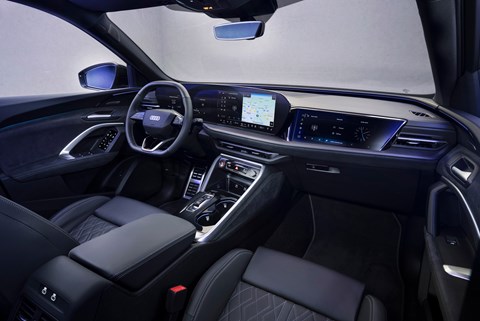
The brand has gone big on lighting, too. It’s daytime running lights and rear lamps are now made up of loads of little OLED pixels, which allow the driver to customise the Q5’s front and rear lighting signatures. There are eight to choose from in total.
How much will the new Audi Q5 cost?
Audi hasn’t yet confirmed UK prices but, in Europe, the entry-level Q5 petrol will start from €52,300 (around £44,000). The cheapest diesel will set you back €57,100 (roughly £48,000), while the range-topping SQ5 will cost €82,900 (almost £70,000). Orders willopen in late 2024, with first deliveries expected to arrive in early 2025.